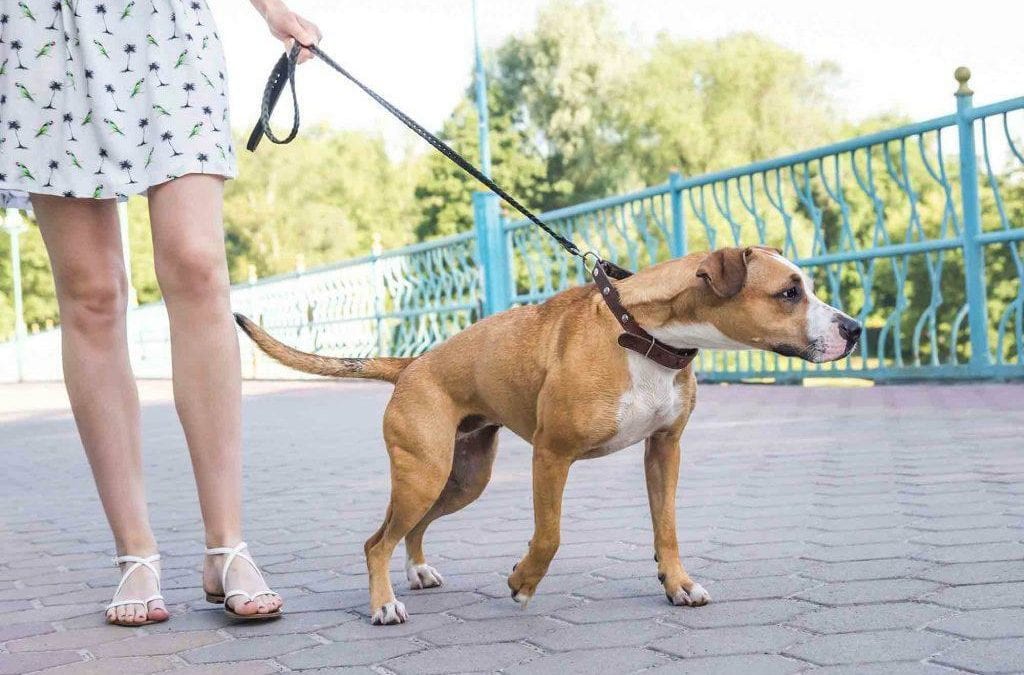You know how important the daily walk is for your dog’s health and mental well being, but if your dog regularly pulls, lunges, or barks at other dogs while on the leash, it can make for an extremely stressful event.
Rather than scrap the walks altogether, or resign yourself to the struggle for the foreseeable future, try our tips for walking your leash-reactive dog instead!
The ‘Why’s’ of Leash-Reactivity
There are a number of reasons why a dog may be leash-reactive. In some cases, a dog simply hasn’t been properly socialized, but more often than not other factors are at play, including:
- When not leashed, two dogs will naturally greet each other from the side, not head-on as when they are leashed. A head-on greeting can signal aggression and cause certain dogs to react with fear or anger.
- When leashed and forced to stand near each other, dogs aren’t able to increase their distance from one another, which could lead to reactive behavior.
- Many dog owners don’t recognize, and may ignore, signs of disgruntlement in two leashed dogs, such as pacing, scratching, flattened ears, and excessive panting.
- Dogs that are repeatedly punished for reacting while on-leash, or are made to sit or lie down when another dog walks by, may have developed a negative association to the sight of other dogs while on the leash, which could lead to more negative behavior.
- Some dogs may feel more protective of their owners when connected by a leash.
10 Tips For Walking A Leash-Reactive Dog
- Identify your dog’s triggers (other dogs, people, bicycles, skateboards, children, etc.).
- Use a cotton or nylon leash; avoid retractable leashes, as there is potential for injury.
- Whenever possible, keep your dog’s leash loose. A tight leash can communicate stress or tension, which may cause a dog to react more harshly.
- Keep a close eye on your dog’s environment while out walking, staying alert to potential triggers.
- Avoid areas where your dog could become cornered or “trapped” by an oncoming trigger, giving a wide berth when possible.
- Never allow your dog to directly greet another dog or person while on the leash.
- The moment your dog notices another dog (or person, bicycle, etc.), but before he or she reacts, give him or her a treat. This helps to create a positive association with the trigger object.
- Never punish your dog for barking/lunging. Simply increase the distance between your dog and the trigger and try again next time.
- If another dog barks or lunges at your dog, try to keep his or her attention and offer treats for not reacting. Make sure to stop giving treats as soon as the other dog goes away so that your dog knows that other dogs mean good things.
- If your dog has harmed another dog or person in the past, consider using a basket muzzle during the training process (please call us with your questions and for recommendations).
Union Lake Pet Services offers Quirky K-9 training classes to meet the needs of your leash-reactive dog, regardless of his or her age or past history. Please don’t hesitate to give us a call with your questions!

